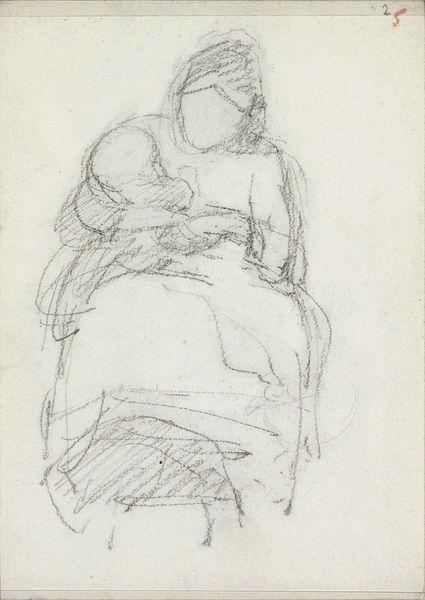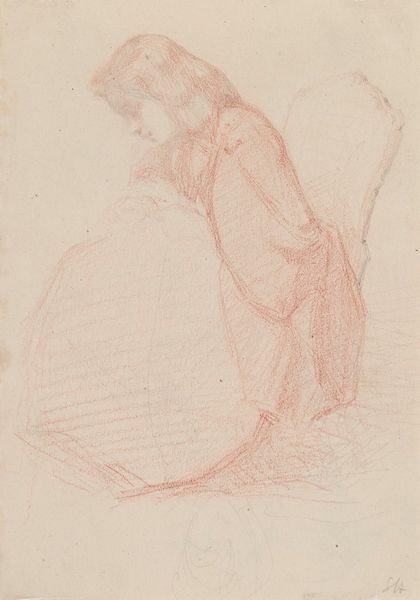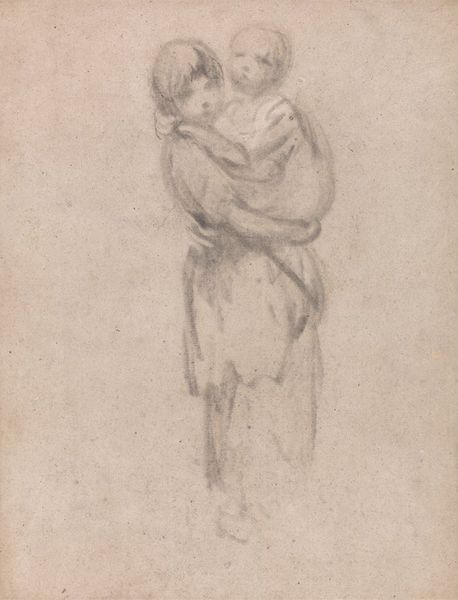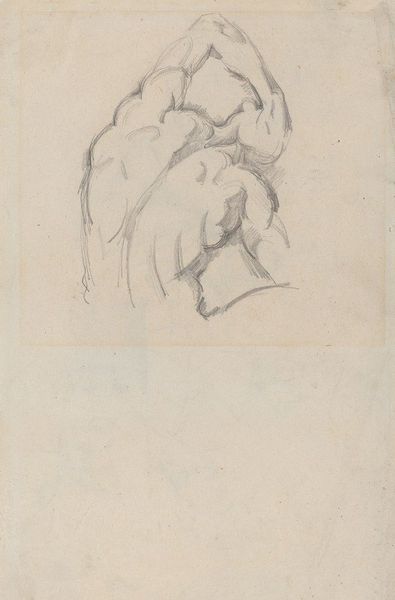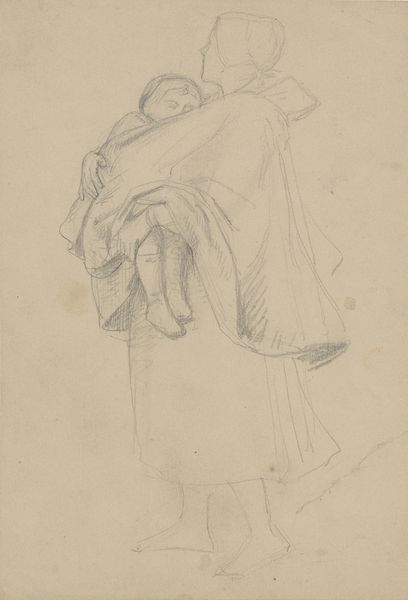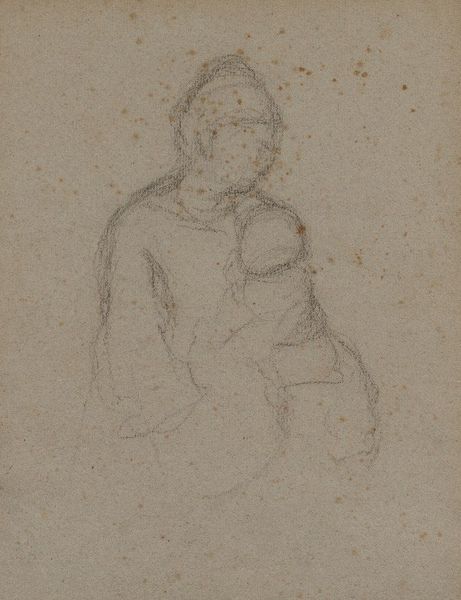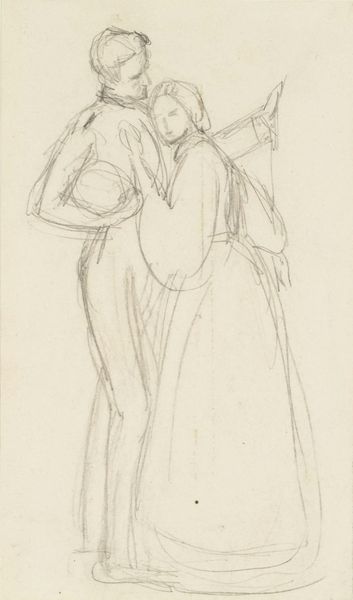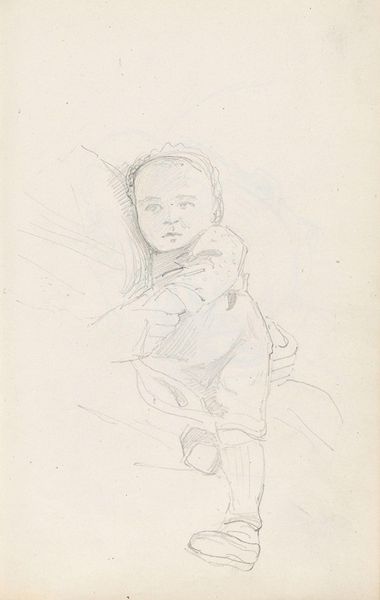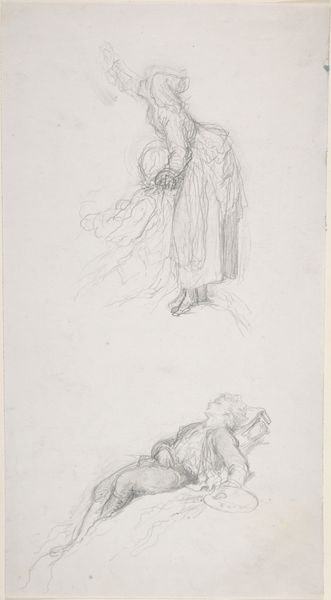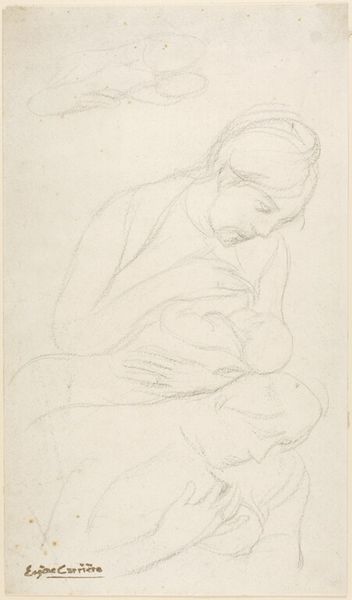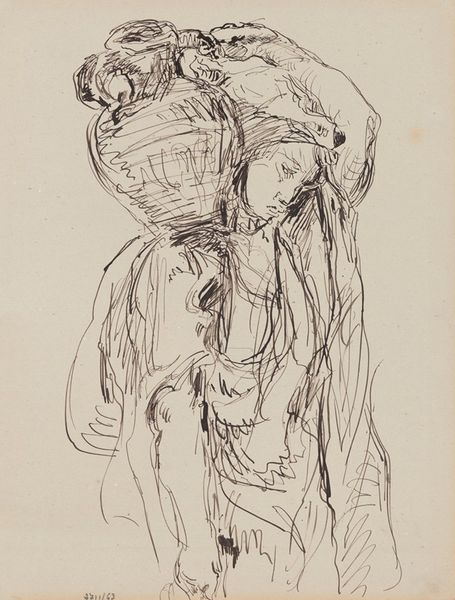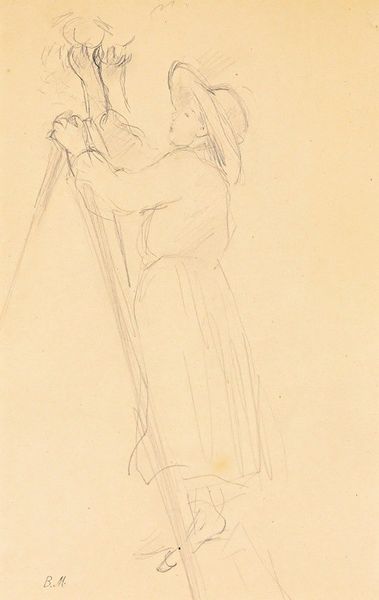
drawing, pencil
#
portrait
#
drawing
#
pencil sketch
#
figuration
#
pencil drawing
#
pencil
#
portrait drawing
#
pre-raphaelites
Copyright: Public Domain: Artvee
Editor: So, here we have Sir John Everett Millais' pencil drawing, "Female – Mother Scrutinising her Baby," created around 1860. It’s such a delicate sketch, almost ethereal, and you can see the intimacy in the mother’s gaze. What jumps out at you about this piece? Curator: I am drawn to the seemingly simple, almost rudimentary nature of the materials. The accessible nature of pencil and paper democratizes image creation. This was done during a period of intense industrialization, the Pre-Raphaelites, however, are longing for the hand made in response to those new modes of production, using materials in this very deliberate way. I wonder what significance that had for Millais? Editor: That's a great point about industrialization! It does feel like a conscious rejection of mass-produced imagery. What do you think he’s trying to communicate about motherhood itself through these specific material choices? Curator: Perhaps the very act of drawing, the labor invested in each line, parallels the work and care inherent in motherhood. This is about everyday labour and a new kind of portraiture which doesn't focus so much on wealth but family dynamics. We often overlook the social dimensions of materials and how that affects labour relations. Editor: It’s fascinating how the drawing's seeming simplicity actually speaks to complex ideas about labour and value. I never considered how closely linked those things were. Curator: And how Millais is using those simple resources and labor as an elevation, a testament to the new portraiture that includes social context. Editor: It definitely gives me a lot to think about. Thanks for sharing your perspective!
Comments
No comments
Be the first to comment and join the conversation on the ultimate creative platform.

